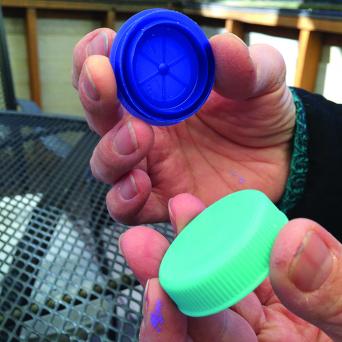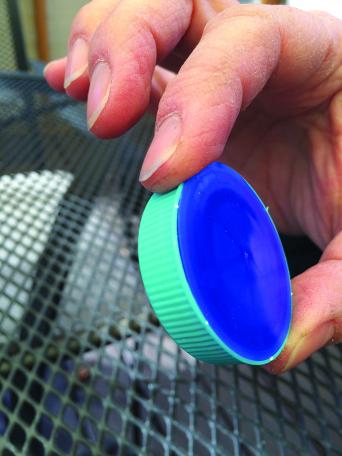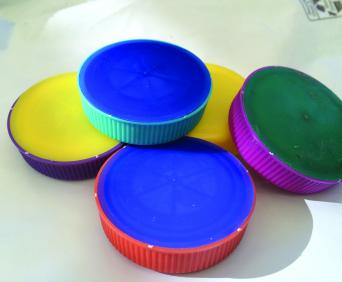
Only 500 to Go, So Let's Get Bottle-Bricking!
Here’s an update on the dual Food Moxie project to 1) construct a keyhole garden from bottle bricks and 2) decorate its exterior with a Eurhi Jones bottle-cap mural. We are halfway to our goal of 1,000 bottle bricks. If you haven’t made any yet, we welcome your participation. And the more bottle caps, the better! Thanks to all who have been contributing.
The keyhole garden will be at Martin Luther King High School, in conjunction with Food Moxie’s Hope Farm program there. Keyhole gardens were pioneered by permaculture practitioners. Their design, a circular raised bed with its own internal compost pile in the center, looks like a keyhole — there is a “slice” cut out of the circle to provide access to the compost column. The MLK project will have an 8-foot circular retaining wall 3 feet high.
Directions for creating bottle bricks, a way to upcycle non-biodegradable waste into building materials, are at tinyurl.com/hstw5s4. You want to stuff them with items that can't be recycled, so no paper, please. In the two years I have been bottle-bricking, I have been amazed and delighted by the odds and ends I'm keeping out of the waste stream — even polyester fabric scraps.
Guidelines for bottle-bricking
Use only 20 oz. or 1 liter bottles; uniformity is important in construction. The 20 oz. energy-drink bottles are easier because they have wide mouths, the better to fill them with trash.
The contents must be highly compressed; bricks need to be weight-bearing. Use a stick or short length of PVC pipe to pound the contents down. Then use a screwdriver to wedge in additional junk. Test your bricks by standing on them.
Drop completed bricks off on the steps in Food Moxie’s office entrance at 608 W. Carpenter Lane, next to Across The Way. If the 608 door is locked, just leave them in the entryway — we don’t worry about people stealing bottle bricks.
Thanks to Helen Seitz for storing the whole collection in her basement, and to the Weavers Way Environment Committee (of which Helen is a member) for their active participation.
The bottle caps will be used to create a mural on the surface of the keyhole, adding an aesthetic element to its function. Thanks to many contributors, we have thousands of caps in a wide variety of shades, but the more the better. This allows more subtlety in color choices and creates a good stash for future projects.
Eurhi and I learned something cool: the disks from peel-off caps, like plastic milk bottle lids, pop perfectly into the screw tops from milk and iced-tea jugs [pictured]. This solves a technical problem. Tiles adhere better when their backs are flat; these make our caps into thick, hollow, flat-back tiles.
Guidelines for donating bottle caps
Caps must be solid colors, without writing or embossing.
Please wash them before donating.
Please also donate flat-disk bottle tops (they can have writing, since they will not be visible).
Three-prong screw-top caps from aseptic cartons of soup and similar products are good backing fits, too, so we welcome them.
We love caps from Ensure bottles, with their reflective metallic centers.
Drop caps off in the tub by the refrigerator at Across the Way in Mt. Airy, or on my porch at 6622 Lincoln Drive.
Betsy Teutsch is a Weavers Way working member and the author of “100 Under $100: Tools for Empowering Global Women.”


